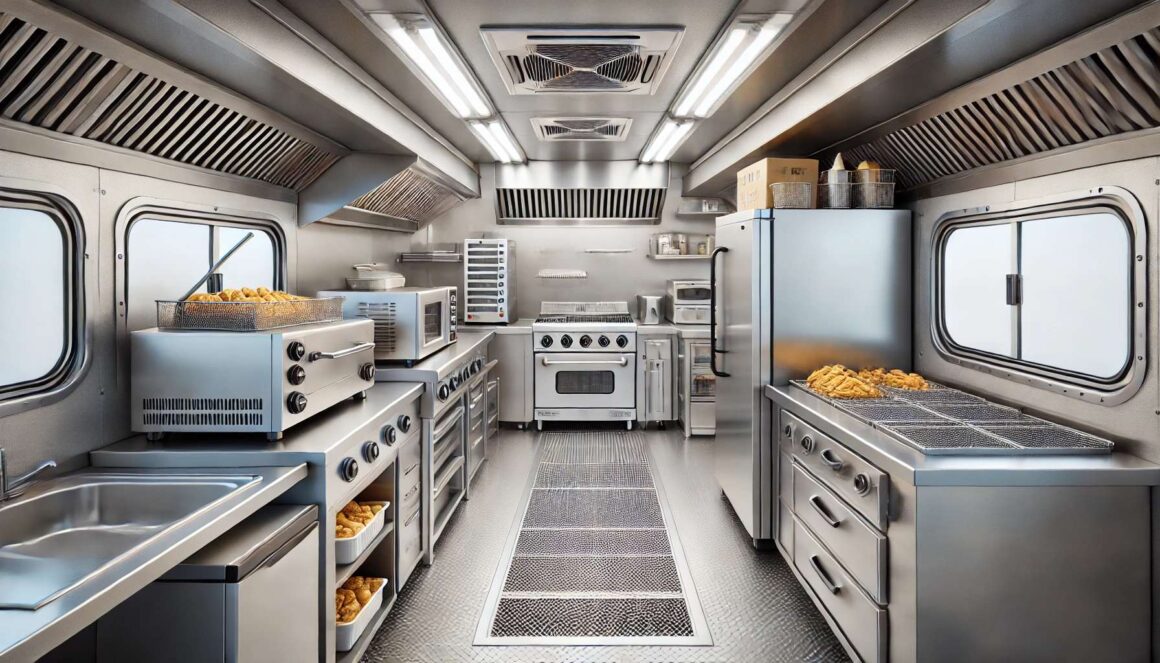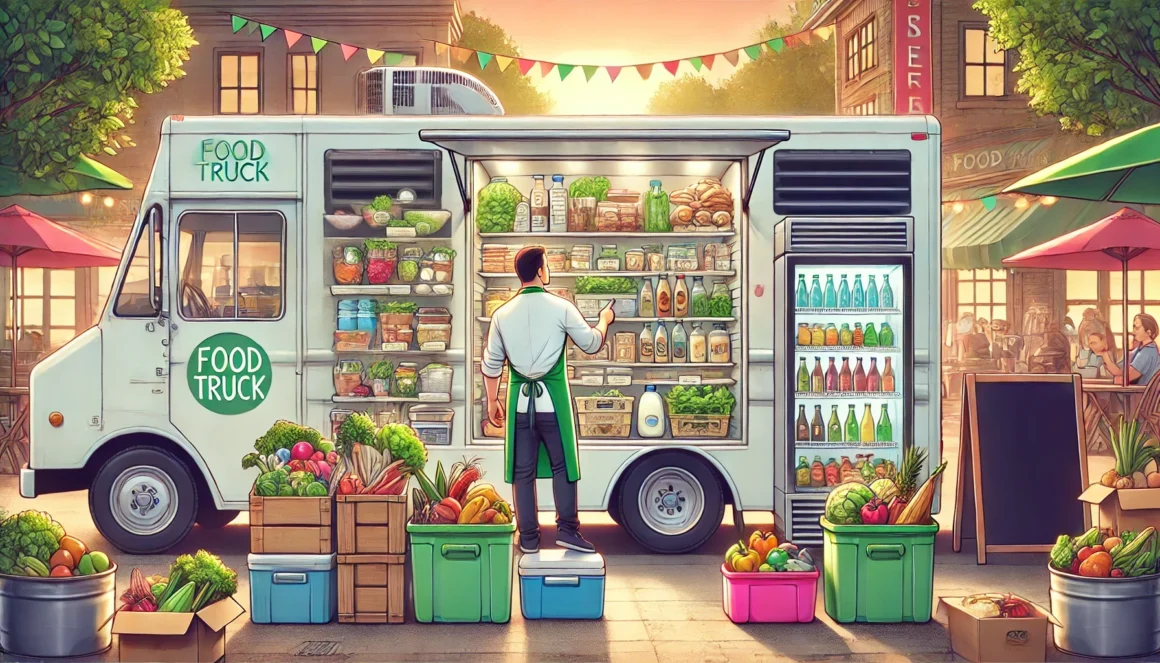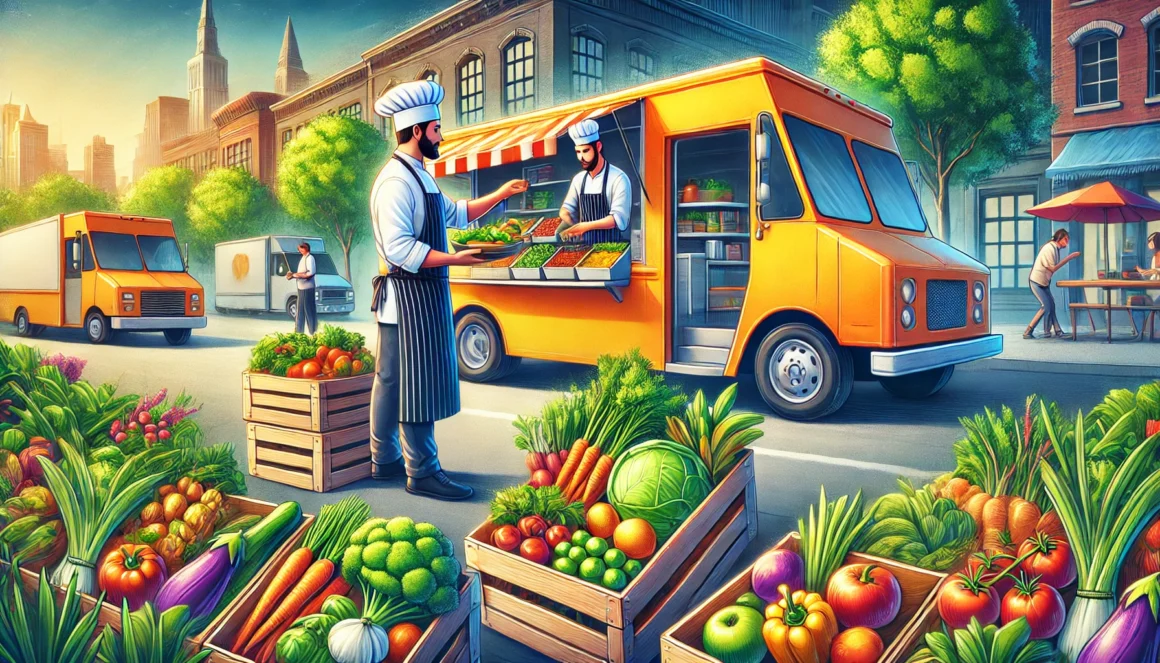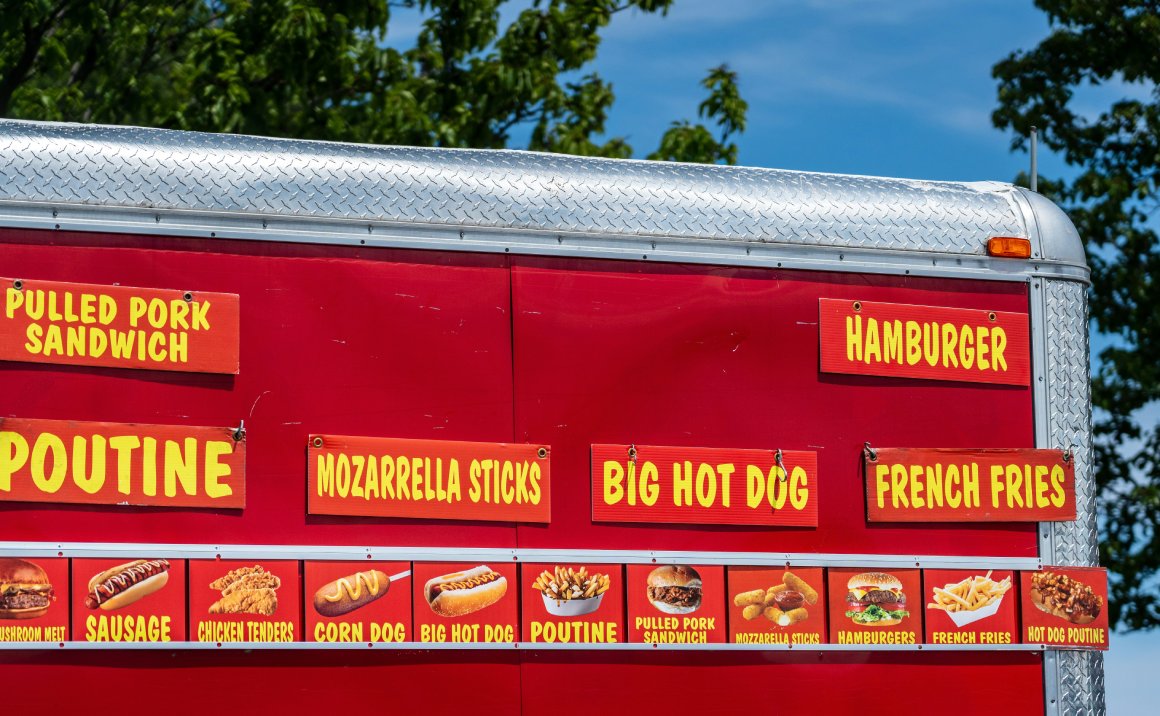
How to Market Your Food Truck: Building a Loyal Following and Standing Out in the Crowd
This post is part of a regular series. Click here to start at the beginning.
You’ve got your food truck, equipment, and permits sorted, but how do you get customers to find you? Marketing is one of the most important elements of running a successful food truck. With a strong marketing strategy, you can attract new customers, build a loyal following, and set your business apart from the competition. In this post, we’ll explore marketing strategies that can help you promote your food truck, whether you’re just starting out or looking to expand your reach.
1. Establishing Your Brand Identity
Before diving into marketing tactics, you need to define your food truck’s brand. Your brand is more than just a logo—it’s the personality and story behind your truck. It should reflect your concept, values, and the experience you want to create for customers.
Key Components of a Strong Brand Identity:
- Logo and Design: Your logo should be eye-catching and reflective of your food truck’s theme. Your truck design should grab attention and give people a sense of what you serve, even before they read the menu.Example: A sushi truck called “Rolling Fresh” uses a sleek, minimalist design with a bold, modern logo. The truck itself is wrapped in a wave pattern, hinting at the ocean’s connection to fresh fish and sushi.
- Colors and Fonts: Choose colors and fonts that match your concept and create a cohesive visual experience. Bright, bold colors might be perfect for a fun, playful ice cream truck, while a more rustic BBQ truck might opt for earthy tones and bold fonts.Example: A coffee truck called “Brewed Awakenings” uses earthy tones of brown and green, along with a cozy font that reflects the comforting nature of a warm cup of coffee on a cool day.
- Your Brand’s Story: Share your journey and the inspiration behind your food truck. Whether you’re following a family tradition, pursuing a lifelong passion, or bringing a unique cuisine to your community, telling your story can connect you with customers on a personal level.Example: “Mama’s Meatballs” tells the story of how the owner’s grandmother passed down a secret family recipe that became the heart of the menu. This personal connection appeals to customers looking for authentic, homemade meals.
2. Social Media Marketing: Your Most Powerful Tool
Social media is one of the most effective and affordable ways to market your food truck. It allows you to interact with customers directly, build a loyal following, and keep people updated on your location, menu, and specials. The best part? You don’t need a huge marketing budget to see results.
How to Use Social Media Effectively:
- Instagram: Food trucks thrive on Instagram because of its focus on visual content. Post high-quality photos of your food, behind-the-scenes shots, and daily updates about your truck’s location. Use hashtags like #foodtrucks, #streetfood, or #yourcityeats to reach a broader audience.Example: A taco truck posts mouthwatering close-ups of tacos loaded with fresh ingredients, paired with captions like, “Come find us on Main St. today until 3 PM! 🌮 #TacoTuesday.”
- Facebook: Facebook is great for sharing event updates, announcing special promotions, and building community. Use Facebook Events to let customers know where you’ll be parked each day or promote special appearances at festivals or local gatherings.Example: A dessert truck creates a Facebook event for its “Cupcake Pop-Up” at a local brewery, inviting customers to come try its new seasonal flavors.
- Twitter: Twitter is ideal for real-time updates and interacting with customers. Tweet your daily location, menu changes, and promotions, and respond to customer questions or feedback quickly to build engagement.Example: A burger truck tweets, “We’re on 5th Ave for lunch today! Stop by for our new Jalapeño Bacon Burger 🔥 #FoodTruckFriday.”
- TikTok: Short, engaging videos are a great way to showcase the personality behind your truck. Use TikTok to show food being prepared, fun interactions with customers, or even day-in-the-life clips of running a food truck.Example: A smoothie truck posts a TikTok video showing the process of making a colorful acai bowl, set to upbeat music, capturing the attention of health-conscious customers.
3. Local Partnerships: Build Relationships and Reach New Audiences
Partnering with local businesses can help you reach a wider audience and create a win-win situation for both parties. Look for opportunities to collaborate with other local businesses, breweries, event organizers, and community groups.
Ways to Build Local Partnerships:
- Collaborate with Breweries: Many breweries don’t have in-house kitchens, making them the perfect partners for food trucks. Reach out to local breweries to park your truck on busy nights or during special events like trivia nights, live music, or beer releases.Example: A BBQ truck partners with a local brewery to serve smoked brisket and pulled pork during weekend events. The truck benefits from the brewery’s established customer base, while the brewery draws more customers with the added food option.
- Sponsor Local Events: Sponsoring or participating in local events like farmers’ markets, food festivals, or charity events gives you access to large crowds and boosts your visibility.Example: A sandwich truck sponsors a local 5K charity run by offering sandwiches to participants after the race. This creates goodwill in the community while introducing the truck to new customers.
- Partner with Local Businesses: Consider setting up outside local shops, gyms, or office buildings where there’s a steady flow of potential customers. Offer a special discount to employees or customers of the business to encourage sales.Example: A coffee truck partners with a nearby yoga studio to offer post-workout coffee and smoothie specials. Customers appreciate the convenience, and the truck builds a new, loyal customer base.
4. Loyalty Programs: Encourage Repeat Business
Loyalty programs are a simple but effective way to keep customers coming back to your food truck. Customers love to be rewarded for their patronage, and offering them something in return for frequent visits is a great way to build loyalty.
How to Implement a Loyalty Program:
- Punch Cards: The classic punch card is an easy and cost-effective way to encourage repeat business. For every visit, the customer gets a punch on their card, and after a set number of punches, they earn a free meal or a discount.Example: A taco truck gives customers a punch for each meal they buy, with the 10th meal free. This keeps customers coming back for more, knowing there’s a reward waiting after a few more visits.
- Digital Loyalty Programs: Use apps or digital tools to create a loyalty program that customers can track on their smartphones. This allows you to capture customer data and send them promotions directly, while still offering the same rewards for frequent visits.Example: A smoothie truck partners with a digital loyalty app that allows customers to collect points with each purchase. The app sends notifications for special deals and reminders when customers are close to earning a free smoothie.
- Exclusive Offers: Reward loyal customers with exclusive offers, such as early access to new menu items or invites to special events. This makes customers feel valued and keeps them engaged with your brand.Example: A burger truck invites loyalty program members to a VIP tasting event for a new burger menu before it launches to the public. This exclusive experience makes loyal customers feel special and keeps them coming back.
5. Event Marketing: Be Where the Crowds Are
One of the most effective ways to get your food truck in front of large audiences is by attending local events. Food festivals, farmers’ markets, music festivals, and even corporate events provide great exposure and the opportunity to serve many customers in a short amount of time.
How to Choose the Right Events:
Promote Your Attendance: Let your followers know where you’ll be by promoting your participation in events on social media. This not only gets your regular customers excited but also attracts event attendees who may not have heard of your truck before.Example: A seafood truck posts on Instagram, “Catch us at the Food & Wine Festival this weekend! We’ll be serving our famous lobster rolls 🦞 Stop by booth #22!”
Know Your Audience: Choose events that align with your target audience. If you run a health-conscious food truck, a yoga festival or a local marathon might be the perfect fit. For a BBQ truck, a local beer festival or sports event might attract the right crowd.Example: A vegan food truck attends a local health and wellness expo, where the audience is likely to appreciate plant-based options. The event exposes the truck to hundreds of potential customers who align with its values.
Prepare for High Volume: Events can bring in hundreds, if not thousands, of customers. Make sure your truck is fully stocked and staffed to handle the volume. Preparing batch ingredients ahead of time can help you serve quickly and efficiently.Example: A crepe truck prepares extra batter and pre-chops ingredients before attending a weekend farmers’ market. This allows the team to assemble crepes quickly and serve more customers during the busy event.
6. Email Marketing: Stay Connected with Your Customers
Email marketing is an often-overlooked but powerful tool for keeping customers informed about your food truck’s latest news, promotions, and events. By building an email list, you can send out regular newsletters, exclusive deals, and updates about your truck’s location.
How to Use Email Marketing for Your Food Truck:
- Collect Email Addresses at Events: Set up a sign-up sheet or tablet at your truck to collect email addresses from customers who want to receive updates. You can also offer an incentive, like a discount on their next meal, in exchange for signing up.Example: A food truck specializing in gourmet hot dogs asks customers to sign up for their email list in exchange for 10% off their next meal. This not only builds their email list but also encourages repeat business.
- Send Regular Newsletters: Once you have an email list, send regular newsletters to keep customers informed about new menu items, upcoming events, and special offers. Newsletters are a great way to share behind-the-scenes content, exclusive recipes, or personal stories that connect you with your audience.Example: A coffee truck sends out a monthly newsletter with information about upcoming pop-up events, seasonal drink specials, and a behind-the-scenes look at the coffee roasting process. Customers feel more connected to the brand and are excited to visit the truck when new items are featured.
- Announce Special Deals and Events: Use email marketing to announce limited-time offers, special deals, or exclusive discounts for subscribers. This helps you drive traffic to your truck during slower days or promote your participation in local events.Example: A BBQ truck sends out an email blast with a coupon for “Buy One, Get One Free Ribs” on a slower weekday, encouraging customers to visit and share the promotion with friends.
- Highlight Customer Reviews and Testimonials: Include positive customer reviews or testimonials in your emails to build trust and showcase what people love about your food truck. This adds credibility and encourages new customers to give your truck a try.Example: A taco truck features customer testimonials in its email newsletters, like “Best tacos in town! The al pastor is out of this world!” This gives new customers a reason to stop by and try it for themselves.
7. Encouraging Word-of-Mouth Marketing
Word-of-mouth marketing is one of the most powerful and cost-effective ways to grow your food truck business. Happy customers are likely to tell their friends, family, and coworkers about their experience, which can lead to more business without any additional advertising costs.
Ways to Encourage Word-of-Mouth:
- Offer an Unforgettable Experience: Creating a memorable experience goes beyond serving great food. It’s about the atmosphere, customer service, and even how your food looks when served. A unique presentation, friendly staff, and an inviting truck design can all make your truck stand out.Example: A dessert truck serving specialty ice cream sandwiches wraps each sandwich in branded paper and includes a fun, handwritten note with every order. This small personal touch creates a shareable moment, making customers more likely to tell their friends or post photos online.
- Incentivize Referrals: Encourage your existing customers to refer new people to your truck by offering incentives. This could be a discount for both the referrer and the new customer, creating a win-win situation.Example: A sandwich truck runs a referral program where customers receive a free sandwich after referring three friends who make a purchase. This motivates loyal customers to spread the word and bring new business to the truck.
- Encourage Social Sharing: Create Instagrammable moments with visually appealing food, creative plating, or even a fun backdrop for photos. Encourage customers to tag your truck in their posts or use a branded hashtag to spread the word.Example: A smoothie truck designs a colorful, tropical-themed truck with a photo-friendly mural that customers love to pose in front of. The truck encourages customers to share photos on Instagram using the hashtag #TropicalSmoothies, giving the truck free exposure to a broader audience.
8. Using Customer Reviews to Build Credibility
Customer reviews play a critical role in building trust and credibility for your food truck. People are more likely to try your food if they see positive reviews from others. Encourage customers to leave reviews on popular platforms like Yelp, Google, or Facebook, and respond to feedback—both positive and negative—to show that you value their opinions.
How to Collect and Utilize Reviews:
- Ask for Reviews: After serving a satisfied customer, politely ask them to leave a review on your preferred platform. You can even display signs near your truck with a link or QR code that makes it easy for customers to leave a review online.Example: A coffee truck has a sign at the counter that says, “Love your coffee? Leave us a review on Google for a chance to win a free drink!” This encourages customers to share their positive experiences.
- Respond to Reviews: Whether reviews are positive or negative, make sure you respond to them. Thank customers for positive feedback, and address any concerns in negative reviews professionally and constructively.Example: A burger truck owner receives a review that praises their food but mentions that the wait time was longer than expected. The owner responds by thanking the customer for their feedback and explaining that they’ll work to improve wait times, turning a potentially negative experience into a positive interaction.
- Feature Reviews in Your Marketing: Highlight glowing reviews in your social media posts, email newsletters, and website. Customer testimonials are powerful social proof that can sway new customers to try your food truck.Example: A taco truck features a 5-star Yelp review in its Instagram Story with the caption, “Thanks for the love! Come try our award-winning tacos for yourself! 🌮✨ #BestInTown.”
9. Tracking Your Marketing Efforts
To know which marketing strategies are working, it’s essential to track your efforts. Whether you’re using social media, email marketing, or event promotions, monitoring the results helps you refine your approach and focus on what’s most effective for growing your food truck business.
How to Track Marketing Success:
- Social Media Insights: Most social media platforms offer analytics that show how well your posts are performing. Pay attention to metrics like engagement (likes, comments, shares), reach, and follower growth to determine what types of content resonate with your audience.Example: A crepe truck notices that behind-the-scenes videos on TikTok get significantly more engagement than static food photos on Instagram. As a result, they focus more on creating video content to keep their audience engaged.
- Customer Feedback: Ask customers how they heard about your food truck. This can give you valuable insight into which marketing channels (social media, word-of-mouth, events) are driving the most traffic to your truck.Example: A BBQ truck places a brief survey at the order window, asking customers if they found out about the truck through social media, an event, or word-of-mouth. The feedback shows that Facebook events are driving the most traffic, so the owner doubles down on promoting events.
- Email Open and Click-Through Rates: If you’re using email marketing, track how many people are opening your emails and clicking on links. This data helps you understand what types of content and promotions are most appealing to your subscribers.Example: A smoothie truck sends out a monthly email newsletter featuring new menu items and exclusive deals. They notice that emails with special offers (like a free topping) have a much higher open rate, so they start including more exclusive deals in future newsletters.
- Sales Tracking: Keep an eye on sales data during specific promotions or after certain marketing efforts. Did a social media post about a special deal lead to more sales? Did your appearance at a local event bring in new customers? Use this information to guide future marketing decisions.
Conclusion: Creating a Winning Marketing Strategy for Your Food Truck
Marketing your food truck is an ongoing effort that requires creativity, consistency, and a deep understanding of your target audience. By building a strong brand identity, using social media effectively, partnering with local businesses, and leveraging word-of-mouth, you can grow your customer base and build a loyal following. Keep track of your efforts, refine your strategies, and most importantly—engage with your customers. A strong marketing plan will help your food truck stand out, attract new customers, and keep people coming back for more.
Stay tuned for the next post, where we’ll explore strategies for finding the best locations and events to park your truck and maximize sales!
This post is part of a regular series. Please use these links to view the rest of the series in order.
Designing the Inside of Your Food Truck for Maximum Efficiency
How to Design the Interior of Your Food Truck for Optimal Workflow and Efficiency When…
How to Manage Food Waste – Proper Storage of Food Items
The Chef’s Guide to Proper Food Storage: Minimizing Waste and Maximizing Freshness Proper storage techniques…
How to Manage Food Waste – Sourcing Fresher Ingredients
Sourcing Fresh Ingredients to Minimize Food Waste: A Chef’s Guide to Better Ingredients and Lower…




